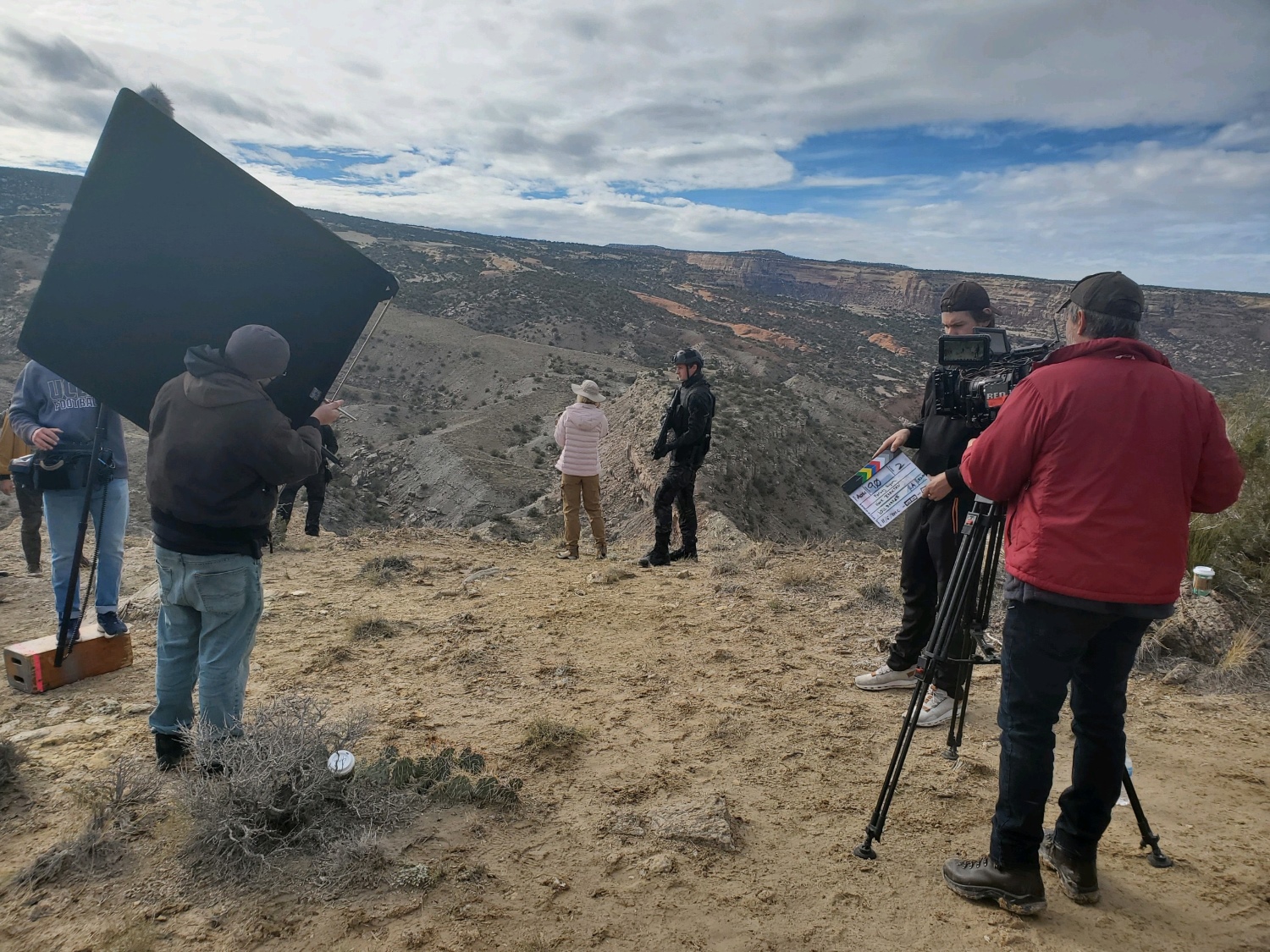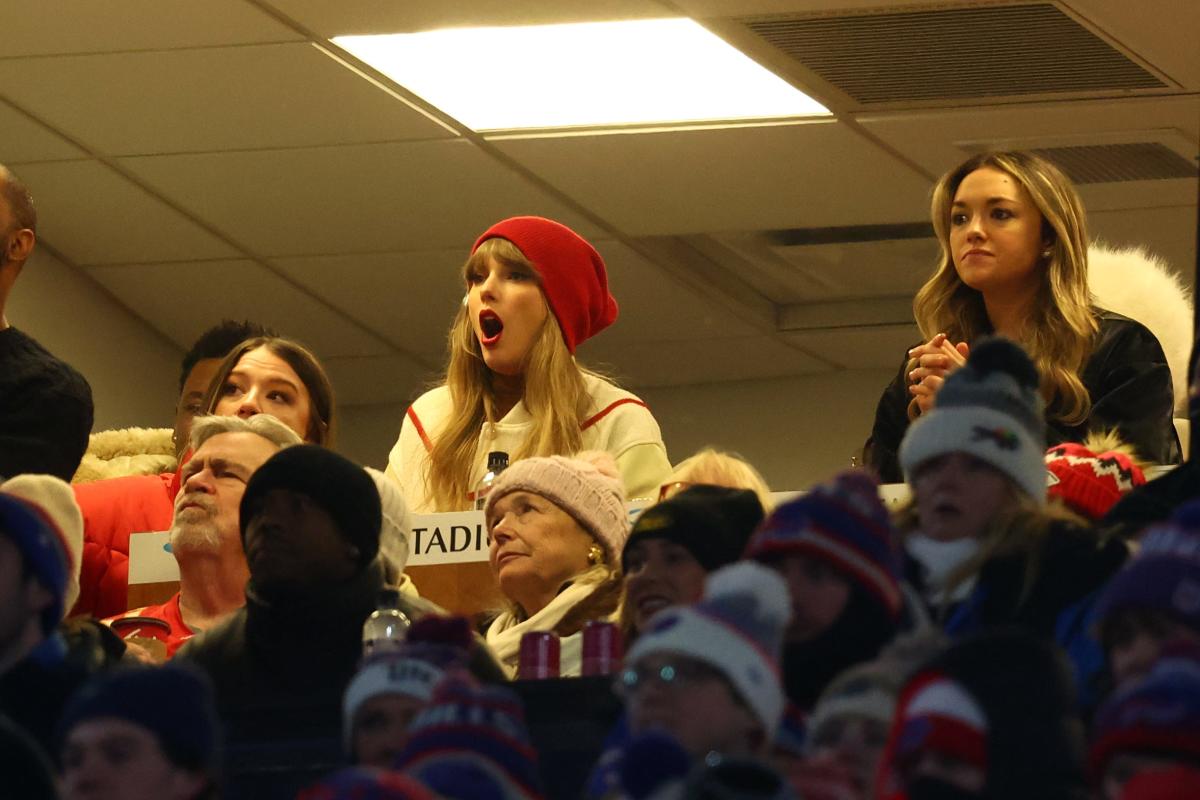GRAND JUNCTION, Colo. — Colorado isn’t exactly known for its bustling film industry and compared to states such as New Mexico, Georgia and Arizona, the amount of film and TV production in the state is bare bones.
Over the past eight years, the state has spent an average of $3 million per year in incentives to bring productions to Colorado. Comparatively, Georgia spent $1.3 billion in 2022 while New Mexico spent $60 million over the same time period.
Some of the biggest names in entertainment film in those states — “Black Panther: Wakanda Forever,” “Ozark” and “Stranger Things” were all shot in Georgia, for example, and “Oppenheimer,” “Breaking Bad” and “Better Call Saul,” rolled in New Mexico.
Tax incentives for the film industry remain controversial because they involve large subsidies from the state coffers, with sometimes lackluster returns to the economy. Butthey have become common practice since the early 2000s and production companies have come to rely on them.
“There is no reason at all to come to a state unless it’s providing a solid incentive — or the actor or executive producer wants it to be there,” said Jim Janicek, a long-time producer and director who splits his time between Denver and Los Angeles and produces most of his work in Colorado.
Janicek said Colorado’s lackluster financial investment in the industry has had ripple effects on the workforce.
“There are more and more crew people moving [to Colorado] from Los Angeles looking for work, and unfortunately they’re going to probably have a hard time getting it underway here for a while,” he said.

Behind the scenes of TV movie “The Happy Camper,” executive produced by Jim Janicek in 2022. The production spent $724,000 locally, employed 60 local cast and crew members, and received an incentive of $145,000.
Photo: Jim Janicek
The seeming lack of interest in the film industry from the state is a departure from its history. In 1969, Colorado created the first government sanctioned film commission in the country.
The TV networks Starz and Encore launched in Colorado in the 1990’s. Yet, much of the media infrastructure that once existed, such as soundstages andrental houses, shrunk in size or left the state entirely in the last few decades.
To understand the economic outlook for Colorado’s film and TV industries, Rocky Mountain PBS (RMPBS) spoke with Arielle Brachfeld, deputy commissioner of Colorado’s Office of TV and Film (COFTM), a part of the Colorado Office of Economic Development and International Trade (OEDIT).
Brachfeld is part of a small team of three working to bring more media production to the state while investing in the current workforce and next generations of creators.
RMPBS: Why invest in the tv and film industry in Colorado when we’re so far behind other states?
Arielle Brachfeld: The global industry for film, media and television is set to hit $400 billion by 2030.The video game market alone is gargantuan — it’s dwarfing sports, music and other entertainment sectors.
Every single industry utilizes media content, be it social media spots, commercials, branded content, etc. We would be doing a disservice to our youth and our current working population to not create these workforce pathways to an industry with high paying jobs with or without a four-year degree.
Speaking from hard numbers, direct audited spend (from payroll, vendor receipts, invoices), we have an 18:1 direct return on investment for funds issued from our film incentive program.
That doesn’t track people on location, like when Denver crew are hired in Grand Junction — we don’t track what those individuals do on their day off. The estimated economic impact that isn’t tracked through direct spend is 33:1. Those multipliers were provided by the Leeds School of Business at the University of Colorado Boulder. These are real returns on investment that are substantial.
RMPBS: In what ways has Colorado’s film and tv industry shrunk over time?
AB: For instance, Comcast had five or six soundstages in Colorado in the past ten years that are no longer here. Lighting Services, Inc, which is one of our biggest rental houses and soundstages, has decreased by 30% in terms of gear and soundstage availability. We have high crew turnover. It’s a starter market where people go to school and they get some experience and they move to a bigger market that has more sustainable opportunities.
That being said, the people that are here want to be here — It’s just a lot of them end up having to work in other states and live here. COVID was a massive hit industrywide, but we were suffering from a lack of sustainable incentives to support the industry even before COVID hit.
RMPBS: Tell me about the new tax incentive program your office just launched this January.
AB: Our neighboring states have significantly more well-funded incentives than we do, and they are reaping the rewards economically from it. So a task force was established in May 2022 to determine how to make our performance-based incentive more effective. That’s how we got to a bill being introduced this past legislative session that was initially $50 million across five years. It got down to a one year $5 million refundable tax credit.
The base credit is up to 20% of qualified expenses, with a potential for an additional 2% uplift for the use of infrastructure like soundstages, or the use of a marginalized urban or rural areas.
So, if, for instance, a production takes place part in Denver and part in Trinidad, the Trinidad portion could be eligible for the extra 2% because that’s a marginalized rural area.
For a company to receive their incentive, they have to show proof of local hires of at least 50%. And hiring background actors, for instance, doesn’t qualify under our incentive. We’re looking for meaningful cast and crew hires, and most companies come in well above that.
I feel like I don’t have to tell you but incentives are necessary for the well-being of this industry. So seeing this commitment from Colorado for an increased incentive is really positive. And it’s something that our constituents and community have been hoping for for a long time.
RMPBS: Why did you decide to phase out your old incentive program?
AB: Our previous system was a rebate where we were given dollars by the legislature to allocate for incentives. Our general fund was about between $500,000 and $750,000 to allocate for incentives, which would go, like, instantly. I mean a single production could wipe that out potentially.
We had gotten additional funding — like $1 to $2 million infusions into our rebate program, but nothing consistent. You can’t bank a tv series on “maybe it might happen” — it needs to be consistent for incentives to really do their work.

The 2022 TV movie “The Engagement Plot” during an audio mixing session with Janicek Media at Coupe Studios in Boulder. The filming, which took place primarily in Colorado Springs, spent $740,000 locally, employed 48 local cast and crew members, and received a Colorado Film Incentive of $147,000.
Photo: Jim Janicek
RMPBS: Can you share the types of productions that have expressed interest in this year’s incentive?
AB: If every single company that’s reached out in interest were to apply, we would be out of the $5 million this first session by a lot, like we’d be already tapped before being open for business.
Between COVID and between the SAG and WGA strikes, production is really booming, and Colorado’s seeing that both with local development and external interest.
We’ve gotten interest from locally created reality TV shows, locally created feature films to network level shows and documentaries. Coach Prime wants to come back for another season. There’s a couple movies of a higher budget level than we generally see that are also interested in applying, but I can’t really speak to details on that.
We have two outstanding local video game companies that want to apply for their projects. One of them — Deck Nine, which is based in Colorado — recently won a Peabody award. They have grown from under ten employees to over 100 in the past several years, and part of that has been because of the incentives and the support from the state and from other economic incentives that OEDIT has offered. They’re the largest employer of SAG-AFTRA actors in Colorado because of the consistent work they provide.
They’ve had requests to move their operations to other states with friendlier incentives, but they love Colorado and want to stay here.

“Glowzies” filming in Grand Junction in November 2022. The interior set was constructed at the GJ Space to Create.
Photo:Colorado Office of Film, Television and Media
RMPBS: Switching gears a bit — what are some of the highlights of your office’s workforce investment initiatives? And which communities or places are you putting a lot of focus on?
AB: One of our governor’s objectives is rural development and creating economic opportunity and industry opportunity in rural communities.
I was the film project manager for Los Angeles Unified’s Arts Education Branch for almost three years and did a lot of community building and workforce development work in those schools. With my educational background, I was like, “I’d love to see something like this here in my community.”
So in 2022, our office launched the Film Exposure Program in four rural high schools in Mesa County. Each high school site got a gear package — because one of the major barriers to entry to this field is gear and equipment. The program is an eight-week boot camp for narrative film where students script, learn about career positions, get hands on experience running camera and sound, setting up lights, being in front of camera and directing. They work with local media content creators who serve as mentors in the school, and then the students create a collaborative film across the different sites.
This academic year, we’re now in six high schools — the same four schools in Mesa County and we’ve expanded to one in Montrose and one in Cripple Creek, so all rural communities. We’re anticipating 180 students to participate. And we’ve started getting local fiscal sponsorship going to these sites, be it from Rotary Club or other foundations. For next academic year, we’re looking to expand to at least to additional sites — one in Ridgway-Ouray and one in Pagosa Springs.
I can talk about the social emotional benefits of film and media until I’m blue in the face. But the other cool thing about it is establishing that film and tv is a viable career pathway. Here’s somebody literally in your community that makes a living doing this content creation, here are the same tools that they use.
For the past five years, we’ve also been doing this summer workshop where we work with the Ute Mountain Ute and Southern Ute in southern Utah and the Durango Ignacio area. We lead a 1-2 week long intensive where the students get a crash course in operating gear, understanding interview technique, and storytelling. The students receive a stipend as part of that program to participate and it’s on the reservation so it’s accessible to students that may not get that type of opportunity otherwise.
RMPBS: What are some ways your office is investing in the current tv/film/media workforce in Colorado?
AB: We offer professional development programs, like we have a free script review program where any Coloradan can submit up to 180 pages of a finished script and get professional coverage. Our office gives stipends to the script reviewers, but it’s free for the script submitters.
We offer a crew and location database. We’re starting to form a really cool commercial industry initiative to help connect content creators in the commercial space with small businesses who need content creation. That will be launched this year.
We also piloted a program of a free production assistant (P.A.) workshop this past fiscal year in Montrose and Steamboat. It was a three hour program that was part lecture of like, this is what. a P.A. does, this is how much they make — and then part hands on work.
RMPBS: What would you say is the biggest challenge your office faces in meeting its objectives?
AB: Time and resources are the biggest limitations in this position. We’re limited by the funds allocated to our department from the government, so I’m in the process of applying for grants.
There’s so many different needs that have been expressed by constituents throughout the community — everything from the lack of public access stations to wanting more professional development opportunities to school districts coming to us wanting to participate in the Film Exposure Program and ushaving limited funds to be able to allocate to that program.
RMPBS: Thank you for taking the time to chat with me. I really appreciate it.
AB: I’m really happy to talk. It always makes me sad when people are like, “We have a film office?” We’ve got to do a better job of outreach and letting people know about the stuff that we are doing, so I’m always happy to talk about it because there’s a lot of helpful programs. We’re civil servants, we want to help.
Andrea Kramar is the investigative multimedia journalist at Rocky Mountain PBS. Andreakramar@rmpbs.org





